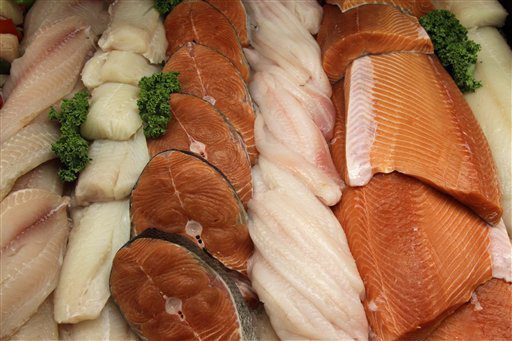
The U.S. Food and Drug Administration (FDA) is advising pregnant women to consume more fish that is not high in mercury. LA Times reports that this updated report, issued Tuesday with the Environmental Protection Agency, says eating fish with low levels of mercury can have important health benefits in pregnant women, breast-feeding women and young […]
 The U.S. Food and Drug Administration (FDA) is advising pregnant women to consume more fish that is not high in mercury. LA Times reports that this updated report, issued Tuesday with the Environmental Protection Agency, says eating fish with low levels of mercury can have important health benefits in pregnant women, breast-feeding women and young children. Pregnant and breast-feeding women can also safely eat Pollock, shrimp, tilapia, catfish, cod and canned light tuna. In 2004, the FDA said that pregnant women should avoid most seafood.
The U.S. Food and Drug Administration (FDA) is advising pregnant women to consume more fish that is not high in mercury. LA Times reports that this updated report, issued Tuesday with the Environmental Protection Agency, says eating fish with low levels of mercury can have important health benefits in pregnant women, breast-feeding women and young children. Pregnant and breast-feeding women can also safely eat Pollock, shrimp, tilapia, catfish, cod and canned light tuna. In 2004, the FDA said that pregnant women should avoid most seafood.
According to Dr. Roger W. Harms, a pregnancy specialist at the Mayo Clinic in Rochester, Min, “Seafood can be a great source of protein, iron and zinc — crucial nutrients for your baby’s growth and development… In addition, the omega-3 fatty acids in many fish can promote your baby’s brain development.” LA Times reports.
In a first-ever move, the FDA has recommended a minimum amount of fish for pregnant women, breast-feeding women and young children; the agency advised consuming between eight and 12 ounces of variety seafood each week. White tuna should be limited to six ounces weekly, since it has higher levels of mercury compared to light tuna. Shark, swordfish and king mackerel, as well as tilefish from the Gulf of Mexico, and other large, predatory fish linked to high mercury levels should be avoided by pregnant and breast-feeding women. The update advice coincides with its 2010 dietary guidelines for Americans, LA Times reports. In the past, the agency has only set a cap on the amount of fish pregnant women should eat.
Consumers groups such as The Mercury Policy Project feel that the guidelines should be stricter. According to LA Times, the group said it was disappointed that the FDA did not require labeling to address the risk of mercury from canned tuna. “Over one-third of Americans’ exposure to methlymercury is from tuna, because tuna are higher-mercury fish and Americans consume so much,” said director Michael Bender to LA Times. “Albacore ‘white’ canned tuna generally has three times as much mercury as ‘light’ tuna. However, Americans consume about three times as much of the light variety…Therefore, each variety — white and light — contributes a staggering 16% of Americans’ dietary exposure.”


